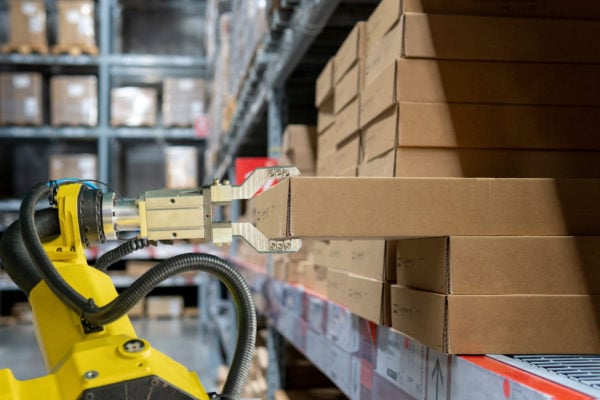Top Three Supply Chain Best Practices to Compete with Amazon
Amazon’s foray into the business-to-business (B2B) space with Amazon Business puts distributors at risk of disruption. Fast delivery, specialized discounts and low prices are a few strategies Amazon Business utilizes to win customers and gain significant market share. According to DigitalCommerce360, Amazon Business has surpassed $10 billion in annualized sales and is set to top $31 billion in revenue and $52 billion in gross merchandise volume by 2023.
While Amazon’s move into B2B may get you worried, the good news is that you can prevent them from stealing your customers. We’re sharing how you can compete with Amazon.
Top Three Supply Chain Best Practices
1. Innovate
The business landscape is filled with stories about companies that have failed due to their inability to innovate. Remember the video rental company Blockbuster? If you don’t want to end up like Blockbuster, you need to innovate. Innovation offers a lifeline for you to gain a competitive advantage and remain relevant to your customers. The intelligent application of innovation in Amazon’s supply chain has been a critical factor in its success.
One way to introduce innovation into your operations is by utilizing technology to build new value propositions that can improve customer satisfaction. Take automation, for example. You can implement autonomous robots into your supply chain for repetitive tasks such as sorting, counting and fetching products in the warehouse. This will help save time and increase fulfillment speed.
Offering value-added services that address customer pain points is another supply chain best practice strategy you can employ to introduce innovation into your operations. Offer customized delivery that allows them to decide when, where and how they want their shipments delivered. This type of customized service will deepen your relationships with customers and increase their loyalty. When adopting innovation, remember to focus on areas where you can add value to your customer’s business.
2. Achieve Hyper Efficiency Using Technology
Supply chains that rely on manual planning processes have subpar operational efficiency and poor customer satisfaction levels. To boost operational efficiency in your supply chain and increase customer satisfaction, you need technology. Below are three supply chain best practice technologies that can help you increase efficiency:
- Warehouse Management System: Invest in a modern warehouse management system (WMS) to gain supply chain visibility. A WMS gives you a real-time view of your supply chain to enable you to reduce inefficiencies, increase order accuracy and improve inventory management. For instance, you can see the inventory you have on hand and where the inventory is located in real time. This allows you to have accurate inventory information and prevent out-of-stock issues and late deliveries.
- Automated Warehouse Picking: Incorporate automated warehouse picking systems such as collaborative robots and automated guided vehicles into your fulfillment operations to improve your picking efficiency. Collaborative robots support warehouse staff with picking and help cut down on walking and fulfillment times. Automated guided vehicles make the picking process more efficient by transporting pallets, cartons or other items around your warehouse without an operator. For example, AGVs can transport inventory from long-term storage locations to forward picking locations to make inventory accessible to pickers.
- Mobile Devices: Equip warehouse staff with mobile devices such as wearable computers and rugged tablets to increase picking accuracy. For instance, rugged tablets integrated with voice picking ensure pickers confirm the items and quantities they pick as they handle items. This eliminates errors and increases the efficiency and accuracy of order pickers.
3. Deliver Personalized Services
Today’s customer wants the same level of hyper-personalized service that they cannot get when they order from e-commerce brands like Amazon. While you may not have a data science team to help you gather and analyze customer data, you can still deliver hyper-personalized services to your customers.
As a supply chain best practice, leverage the deep relationship you have with your customers to conduct regular feedback sessions to gather information about your customers. Also, invest in analytics to accurately monitor your customer behaviors in real time across all channels. These processes will help you better understand your customers at an intimate level and offer them personalized services such as specialized pricing and intelligent suggestions.
Amazon’s inability to be an expert on every product it sells provides you with another opportunity to deliver a high level of personalized customer service to your customers. Leverage your knowledge to provide technical expertise to customers and help them solve problems they don’t even know they have. In addition, maintain a good customer service level by rewarding customers for regular ordering, responding fast to queries, and going the extra mile to ensure your customers’ needs are met.
Protect Your Turf with These Supply Chain Best Practices
The way people shop and buy is changing and the distribution marketplace is no exception. We hope you try one or more of these supply chain best practices to stay in step with buyers evolving demands and grow your market share. Continuously keep your eye on how the distribution market evolves and proactively look for ways to improve your business and serve your customers better.





